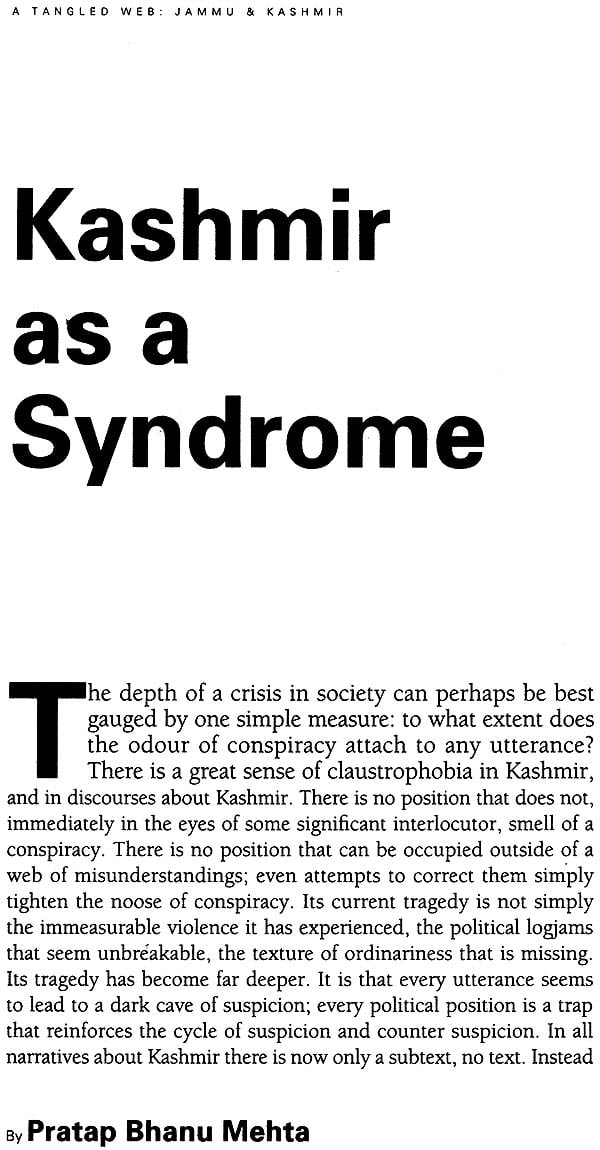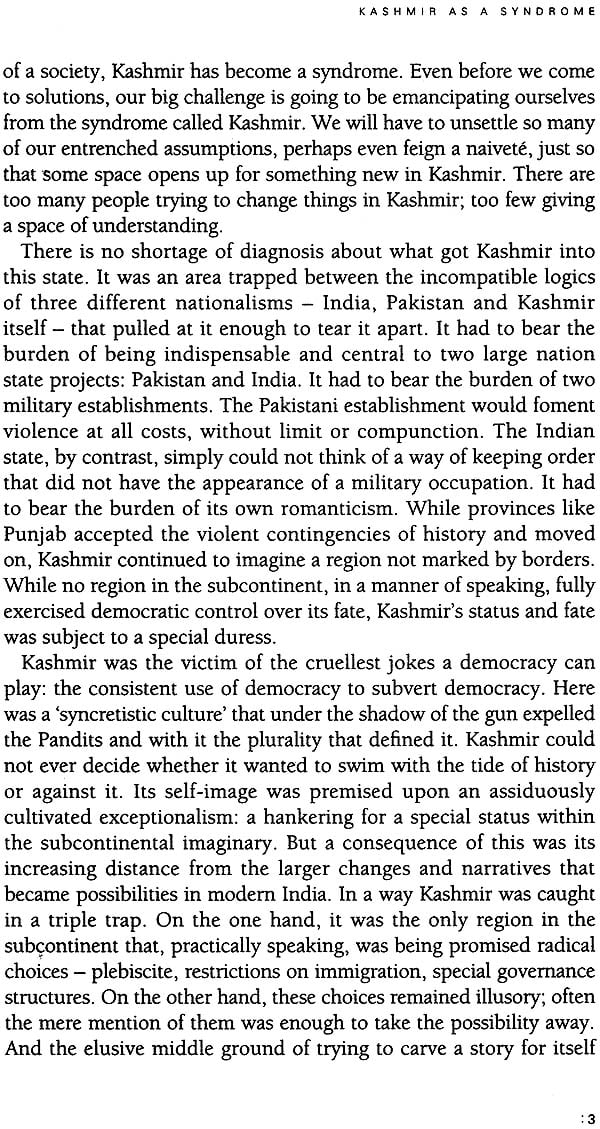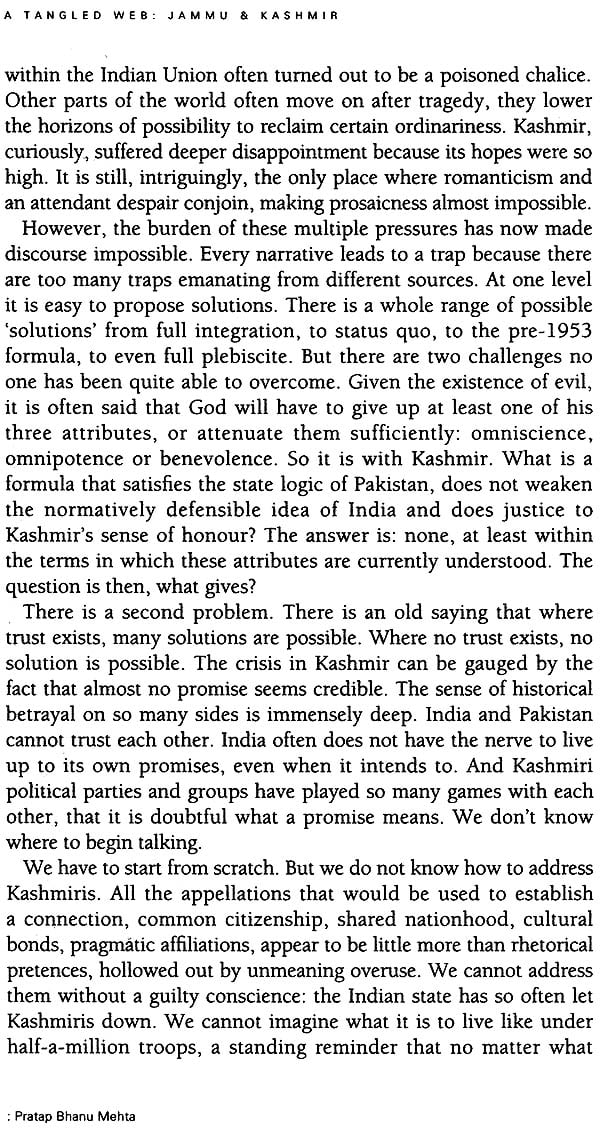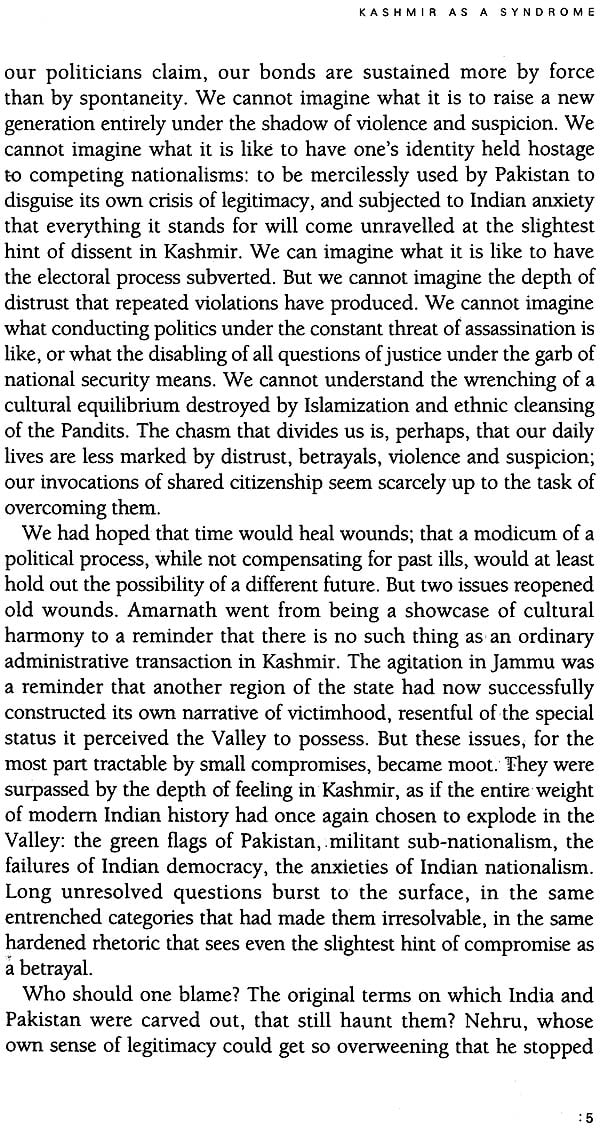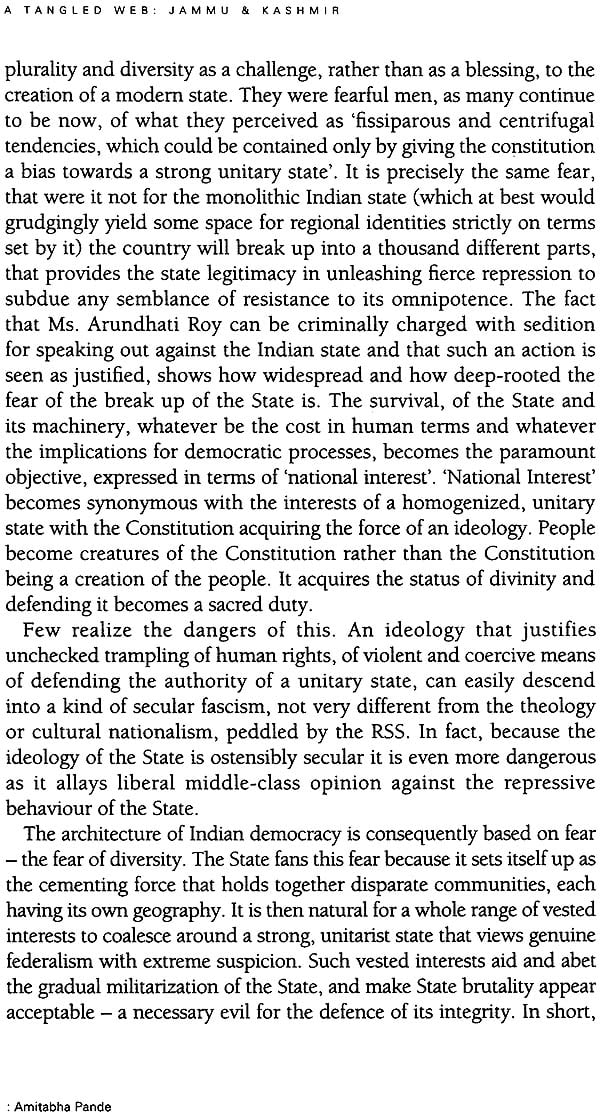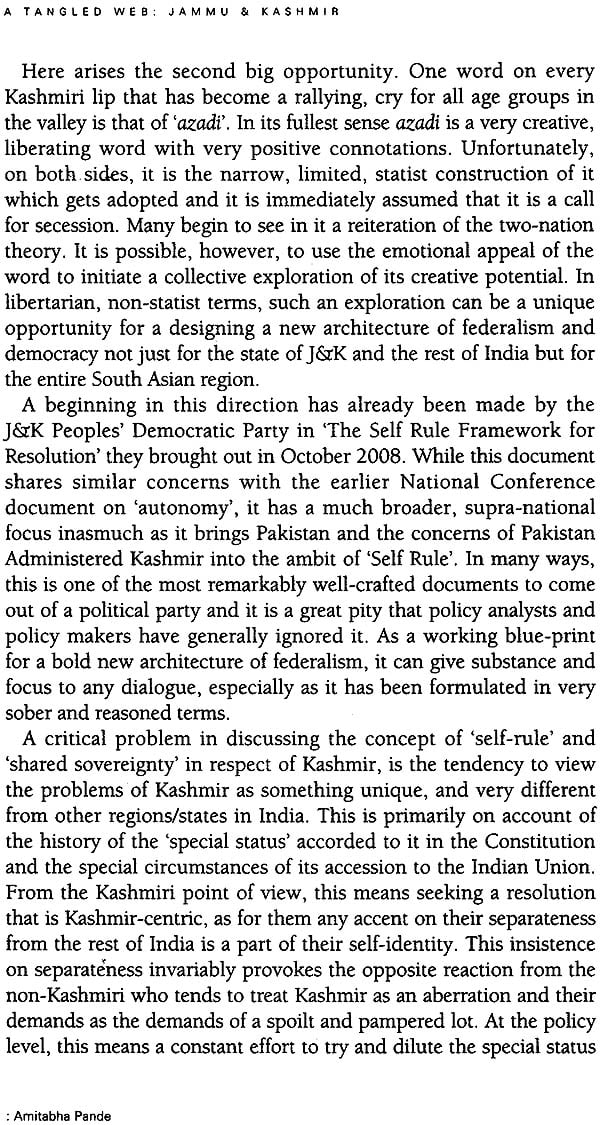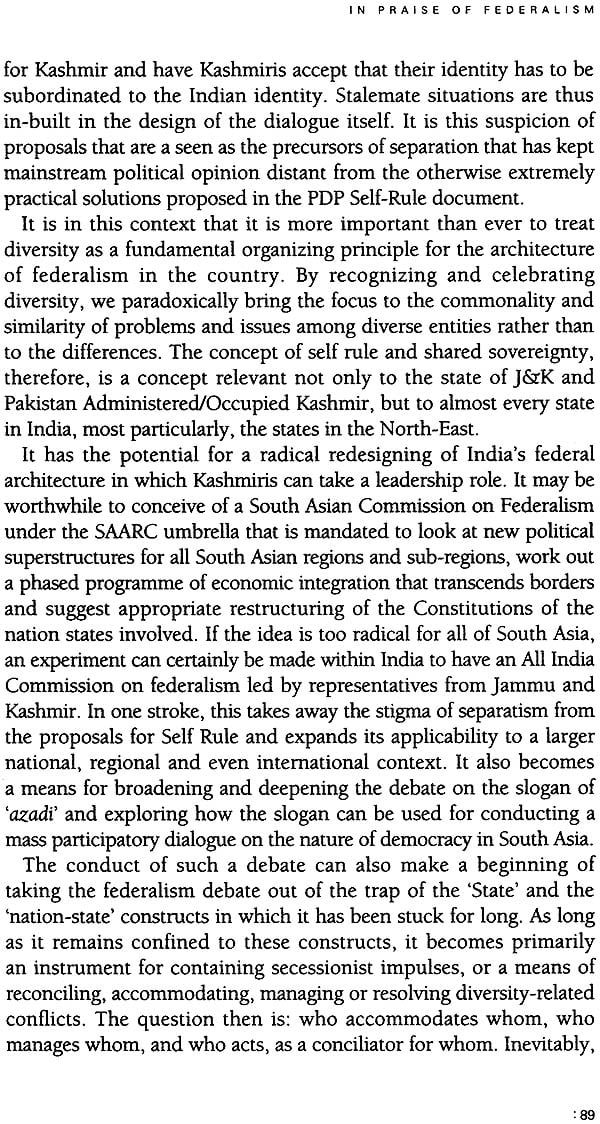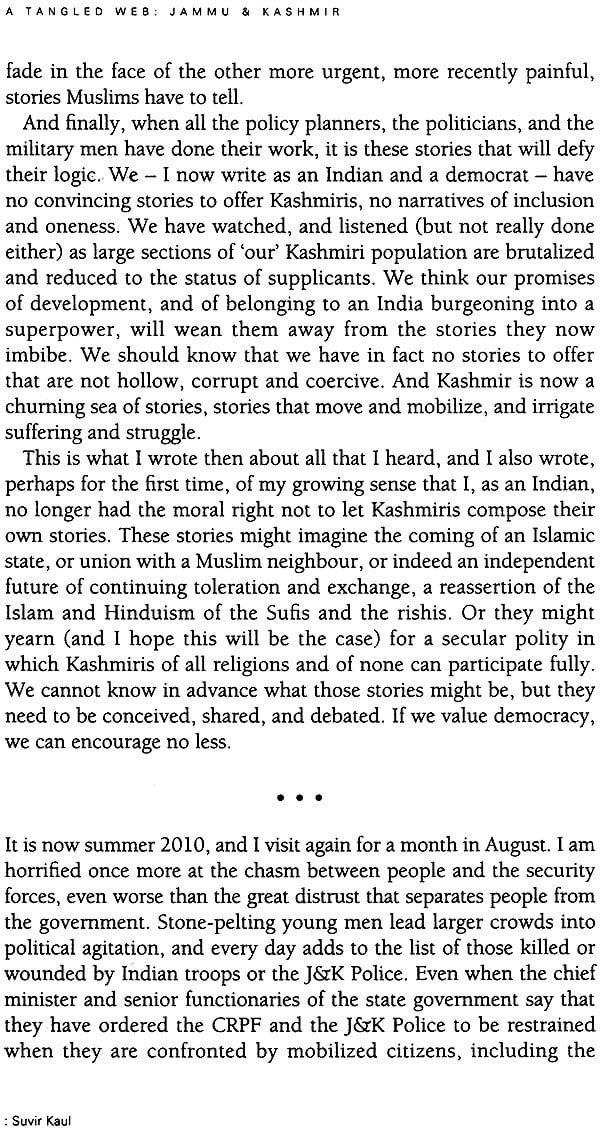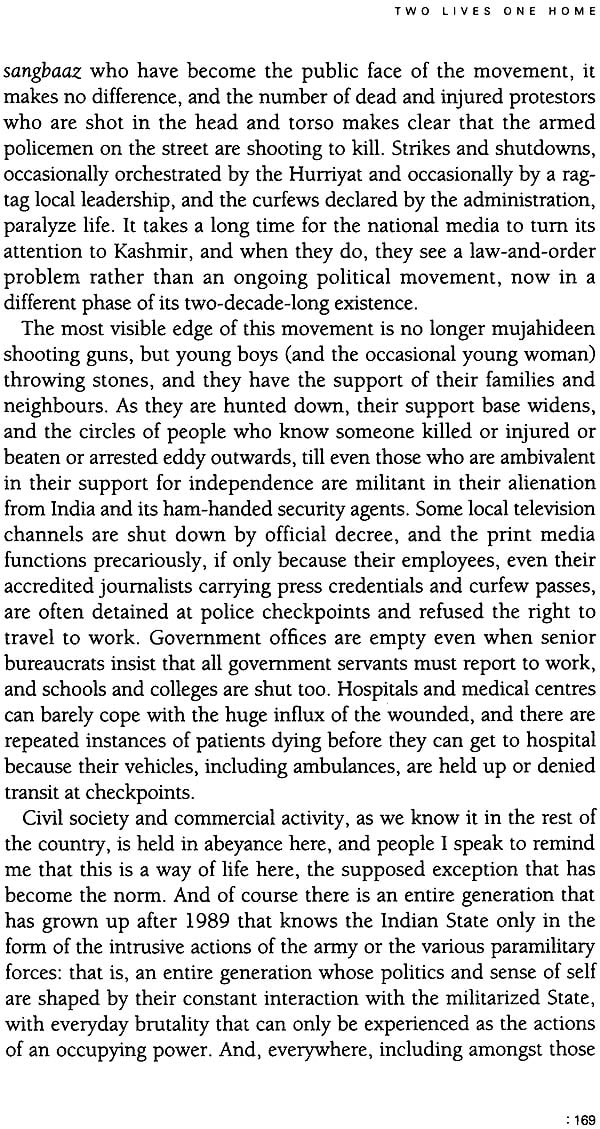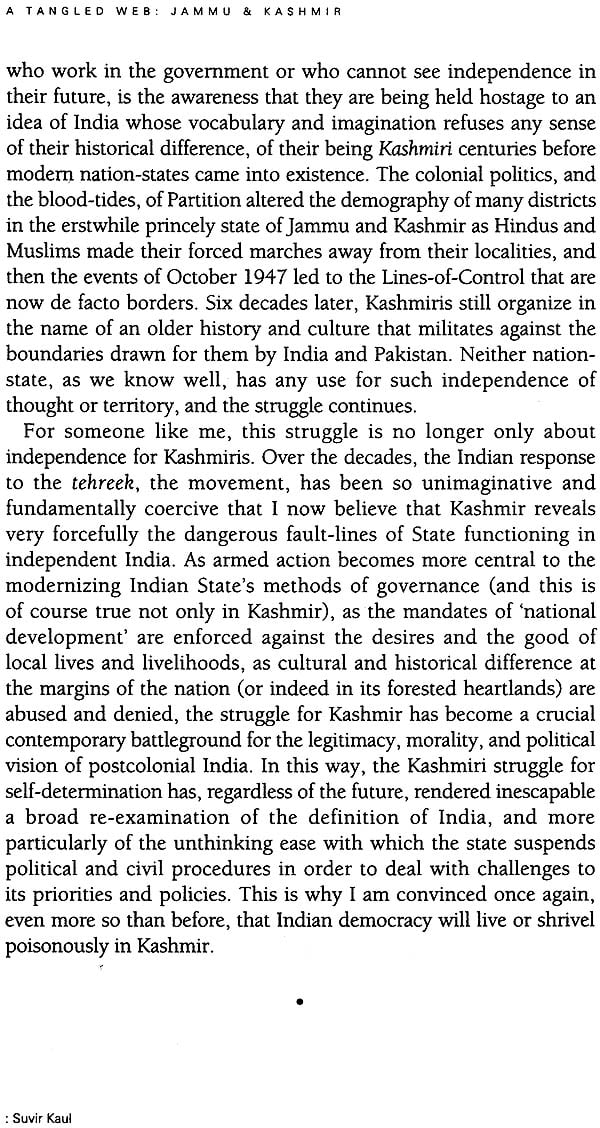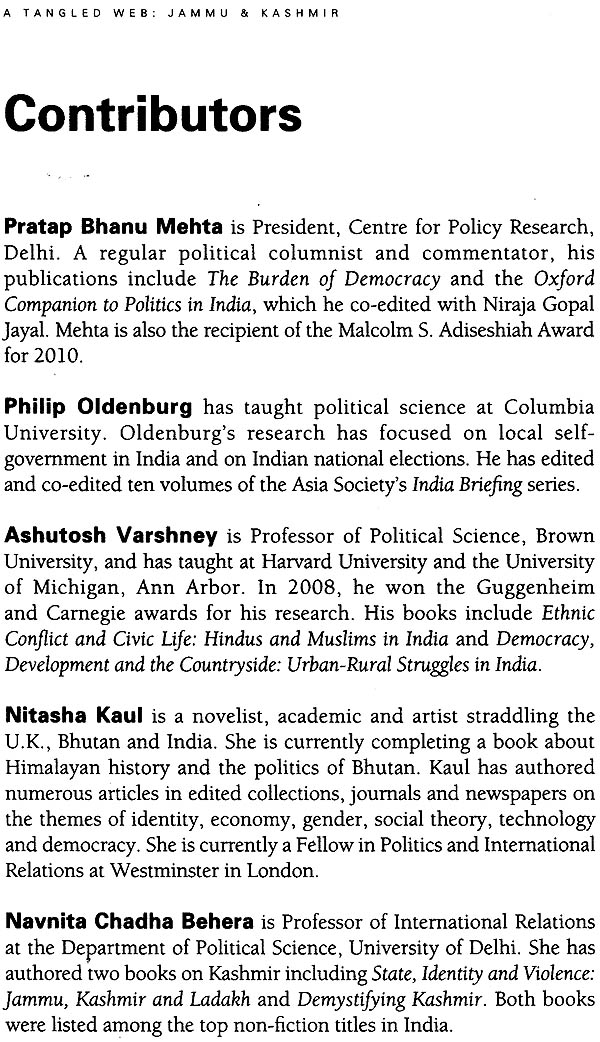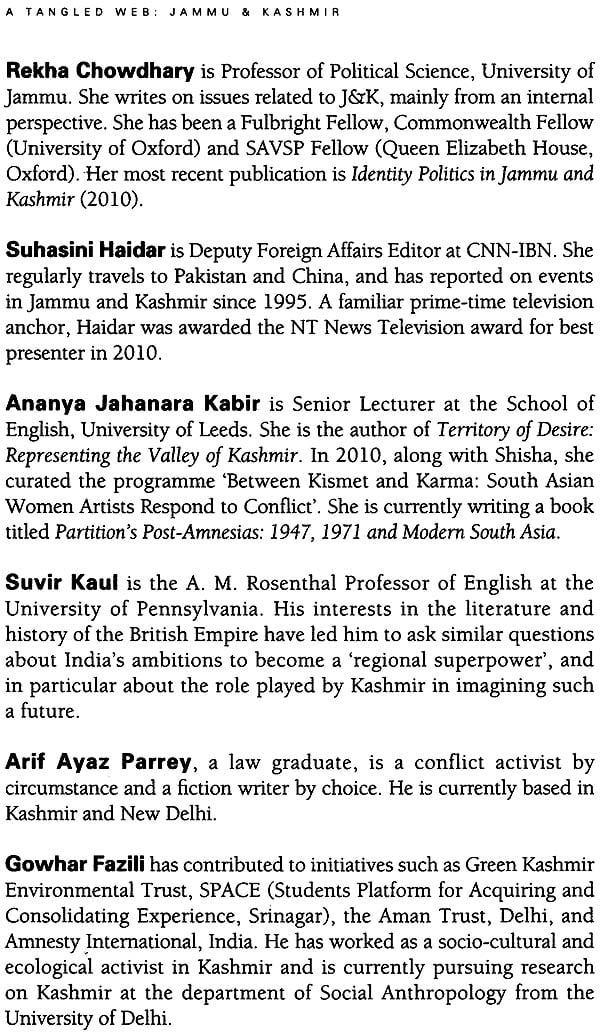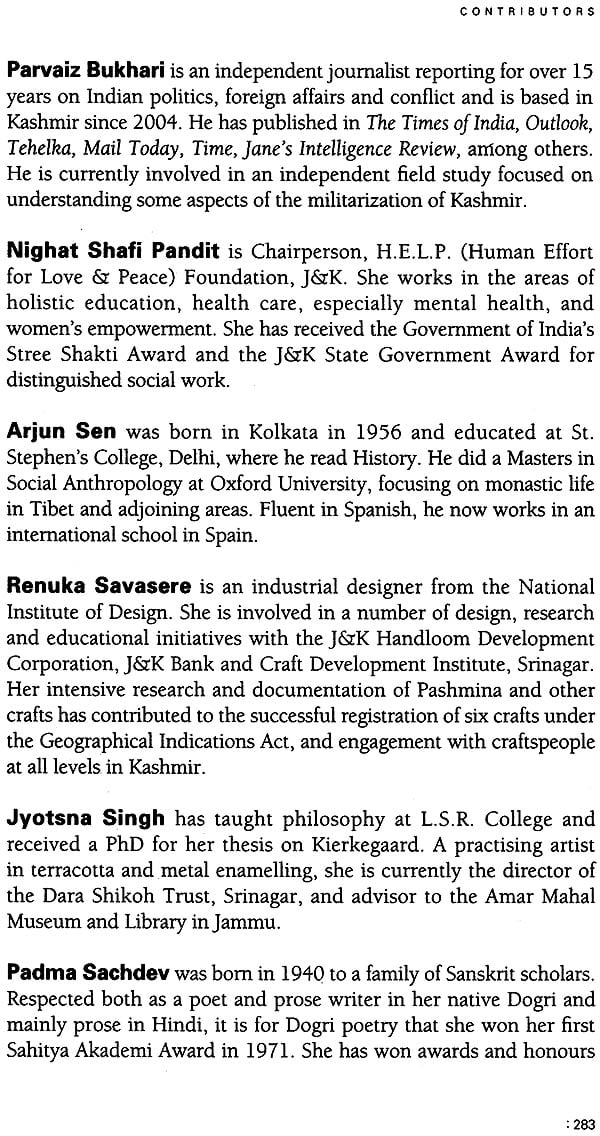
A Tangled Web (Jammu & Kashmir)
Book Specification
| Item Code: | NAG913 |
| Author: | Ira Pande |
| Publisher: | Harper Collins Publishers |
| Language: | English |
| Edition: | 2011 |
| ISBN: | 9789350291542 |
| Pages: | 294 |
| Cover: | Hardcover |
| Other Details | 8.5 inch X 5.5 inch |
| Weight | 440 gm |
Book Description
Founded in the mid-nineteenth century, the state of Jammu and Kashmir brought together areas that are culturally linguistically and geographically diverse: Jammu, Kashmir, Ladakh, Gilgit-Baltistan and what is now Pakistan Occupied Kashmir. It is in this genesis, perhaps, that the seeds of the current unrest lie. And the key to peace in this volatile region is in an understanding of this diversity. A Tangled Web: Jammu & Kashmir attempts to do that by tracing the journey of the land from being paradise on Earth to a paradise lost.
The essays here familiarize the reader with the conflicting views on history, politics and autonomy pertaining to the region, and examine the various political, cultural, economic and social issues at play. Also included are features that voice the concerns of ordinary men and women who have borne the brunt of decades of unrest; as well as commentaries on the beauty, art and food typical of the area, which capture the ethereal and unique essence of a troubled Eden.
As analysts and politicians, academics and artist try to make sense of an increasingly volatile situation, A Tangled Web offers an insightful perspective on what is undoubtedly and area of great strategic and geopolitical significance.
Ira Pande worked as university teacher for 15 years, and then as an editor at Seminar, Biblio, Dorling Kindersley and Roli Books. She is currently Chief Editor, IIC Publications. She is the author of Diddi: My Mother's Voice.
Jammu and Kashmir, contrary to public perception, is an extremely diverse and pluralistic entity. Its founding by my intrepid ancestor Maharaja Gulab Singh in the mid-nineteenth century involved the bringing together by treaty, conquest and diplomacy extremely diverse cultural, linguistic and geographical areas. Thus Ladakh is an extension of Tibetan culture, Gilgit-Baltistan of Central Asian culture, the Jammu regions with predominantly Dogra culture similar to much of Himachal and, after the ceasefire which came into force on 1 January 1949, the fifth region that we call PoK came into being is largely a Punjabi-Pahari speaking region. In the midst of these four diverse, even disparate, regions lies the glorious Kashmir Valley which, as it were, is the jewel in the crown. One of the most beautiful places on earth, the Kashmir Valley for centuries nurtured a gentle, Sufi-oriented Islam, the shrines of which such as Charar-e-Sharief, Maqdoom Saheb and Baba Rishi are revered by Hindus and Muslims alike. It also has important Hindu temples such as the sacred pool of Khir Bhawani, the snowy pilgrimage of Sri Amar Nathji and the ancient but vibrant temple of Lord Shiva overlooking Srinagar.
Unfortunately, ever since the first tribal invasion from Pakistan was launched in October 1947, the state has been repeatedly subjected to turmoil and violence. Let it be remembered that half of the area of the original 84,000 square mile jammu and Kashmir State is now no longer under Indian control, shared as it is between Pakistan and China. In the last two decades since 1989, the state has once again been going through an excruciated phase. Almost the entire Kashmiri Pandit community of several lakhs felt insecure enough to leave the Valley lock, stock and barrel. Thousands of Kashmiris, specially youth, have perished in militant attacks and counter- terrorist actions with the unfortunate but inevitable quota of human rights violations. Many areas have been converted into graveyards, with the bodies of a whole generation of young Kashmiris largely but not exclusively trained, armed and motivated from across the Line of Control, lost to the forces of violence and fundamentalism. The unique culture of Kashmir - its syncretic religious traditions, its art and handicrafts, its carpets and shawls, its saffron and apples - have all been overshadowed by political turmoil, violence and civil strife.
It is not my intention here to dwell at any length upon the background of the whole question. There is a massive and growing corpus of literature on Kashmir, and interested readers will find considerable material in my autobiography (Oxford University Press) and in the two volumes of my correspondence with Jawaharlal Nehru and lndira Gandhi (Penguin). Located as it is in one of the most sensitive strategic areas of the world close to China, Pakistan and Afghanistan, jammu and Kashmir occupies a crucial geopolitical significance. With a nuclear-armed Pakistan in a state of flux unable, or unwilling to prevent fundamentalist organizations from attacking their own country as well as India, and with Afghanistan'S future still excruciatingly uncertain, great vigilance needs to be maintained on the whole situation in Jammu and Kashmir.
It is equally necessary that the legitimate aspirations of the people belonging to the three regions of jamrnu, Kashmir and Ladakh should be addressed effectively. Perhaps a region-centric solution, including the two regions of Gilgit-Baltistan and PoK held by Pakistan, will have to be worked out if this political conundrum is ever to be solved, and the vast human tragedy that it involves can be brought to an end. The cries of widows, the wails of orphans, the frustration of the youth and the despair of the elders cannot merely be addressed in political terms. There has to be a genuine effort on behalf of all the stakeholders to overcome long-seated prejudices and rigid formulations, so that instead of remaining a problem and a burden, Kashmir resumes its place as an international tourist paradise where people of all communities live together in peace and harmony.
This special issue of the IIC Quarterly seeks to look at the whole situation in Jammu and Kashmir from many points of view including the political, the cultural, the economic and the social dimensions. I am sure it will be of deep interest not only to people directly connected with jammu and Kashmir, but to anyone in the country or abroad who is interested in peace and progress in this region.
| Foreword | |
| Editorial | |
| 1 : SHADOW LINES | |
| Kashmir as a Syndrome | 2 |
| Uneasy Neighbours | 12 |
| Three Compromised Nationalisms | 26 |
| On Loving and Losing Kashmir | 42 |
| Re-framing the Conflict | 54 |
| The Missing Link | 64 |
| Friends and Foes | 74 |
| 2 : AT THE CROSSROADS | |
| In Praise of Federalism | 80 |
| Mother India's Stepchildren | 92 |
| The Politics of Maximum Autonomy | 100 |
| Unfolding History | 116 |
| Caught in a Tangle | 126 |
| An Outsider's Inside View | 138 |
| 3 : CRIES AND WHISPERS | |
| Talismans | 150 |
| Two Lives One Home | 160 |
| Two Faces of Janus | 172 |
| Grieving as a Medium | 184 |
| Barriers of Militariztion | 198 |
| Wounds and Balms | 208 |
| Celebrating Ladakh | 218 |
| 4: TERMS OF ENDEARMENT | |
| Cradle of Craft | 232 |
| Custodians of Culture | 254 |
| Conversation | 256 |
| Conversation | 259 |
| Interview | 262 |
| Interview | 262 |
| Interview | 267 |
| A Taste of Paradise | 272 |
| Contributors | 280 |
